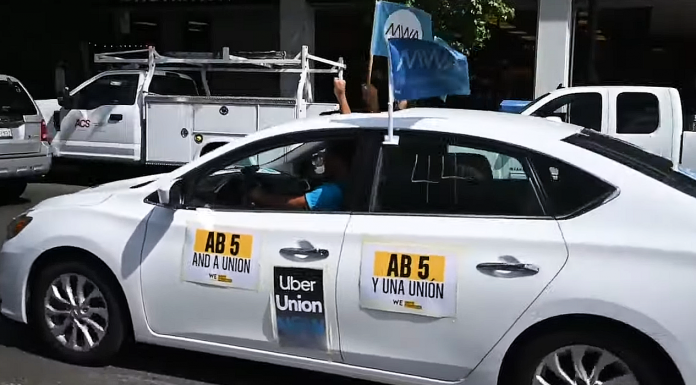Presumptive Democratic nominee Joe Biden and his running mate, Kamala Harris, have both criticized the ridesharing services Uber and Lyft for their business models, yet their campaigns have paid more than $80,000 for their services.
Reports obtained from the Federal Election Commission by Americans for Tax Reform show that the Harris and Biden campaigns have used Uber and Lyft for ridesharing services at least 1,456 times.
Both Biden and Harris said they support California Assembly Bill 5, which prevents Uber and Lyft from hiring workers as independents contracts instead of as employees.
I support #AB5 in California, which will give workers the dignity they deserve in the workplace. I agree with @transportworker that we can’t let corporations undermine basic rights by adding these exemptions to ground-breaking legislation. https://t.co/bouzgRLBU7
— Joe Biden (@JoeBiden) March 7, 2020
Harris’s campaign spent $2,260.14 on Uber in a single night, July 26, 2019.
Biden’s campaign spent far less overall than Harris’s–about $11,700 compared to nearly $68,900.
As Biden and Harris promote a left-wing war on ridesharing, Uber CEO Dara Khosrowshahi said his company will suspend its services in California if the state forces it to abandon independent contractors.
By hiring independent contractors to drive for Uber and Lyft, the ridesharing companies are able to keep costs low and maintain their business model.
Companies do not have to provide independent contractors with the same benefits and protections as employees.
Yet, Uber and Lyft still draw many workers because their business models provide completely flexible work schedules to drivers.
Uber and Lyft’s employees know that their jobs depend upon their independent contractor status, and 72 percent of contractors support maintaining that status, according to the CA App-Based Driver Survey.
The general public also knows that Uber and Lyft require independent contractors to remain in business, and a Pew Research poll found that “66% of ride-hailing users think of the drivers who work for these services as independent contractors, while 23% view them as employees of the app or service.”

